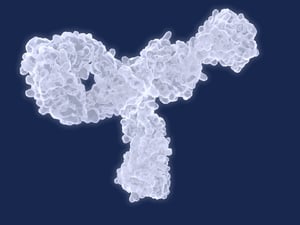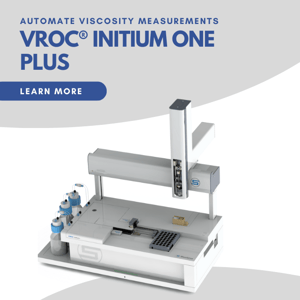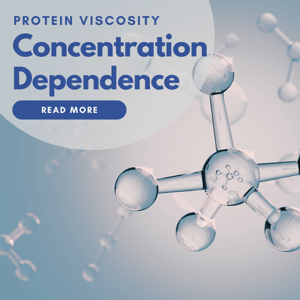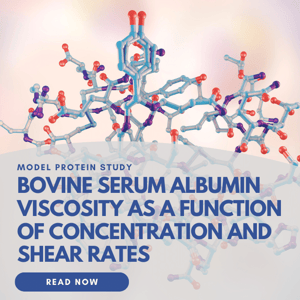
Can Your Proteins Take the Heat Part II
Application Note Download
When proteins are heated above a critical temperature, the higher order structure is lost. Molecular unfolding changes the size of the proteins and exposes otherwise hidden functional groups that can be attracted to similar sites on neighboring molecules. The increase in the attractive component of the protein protein interaction (PPI) can lead to aggregate or cluster formation unless a significant repulsive barrier is present to prevent it.
The electrostatic repulsion can stabilize proteins when in a charged state. To further explore the sensitivity of temperature dependent viscosity measurements to denaturation or melting transition, we have created this application note with a series of dilute BSA solutions in buffers of varying pH. A second part to our initial study of heat (view Part I application note here), download our application note to learn more!
KEYWORDS:
- Denatured Protein
- Bovine Serum Albumin (BSA)
- Melting Temperature
- Protein Stability
- Buffer Composition
- Protein Protein Interactions (PPI)
.jpeg?width=300&name=Woman%20scientist%2c%20documents%20and%20hands%20writing%20_575258496-min(1).jpeg)


.png?width=200&height=58&name=RheoSense%20Logo%20(REGISTERED).png)



